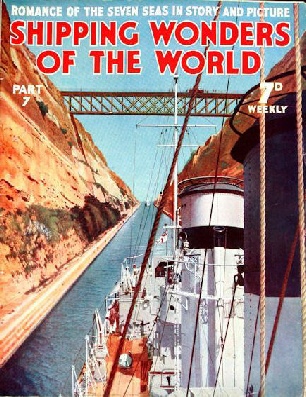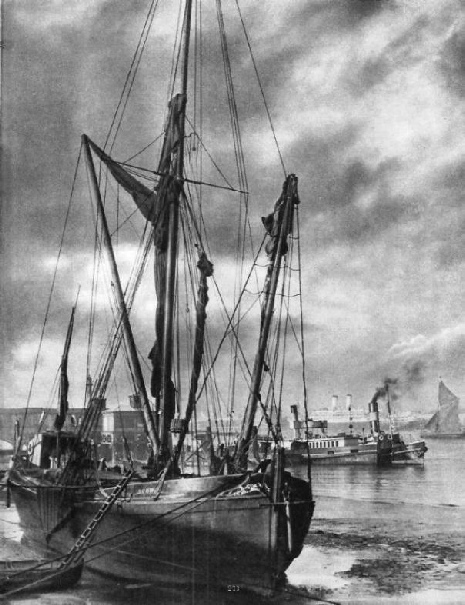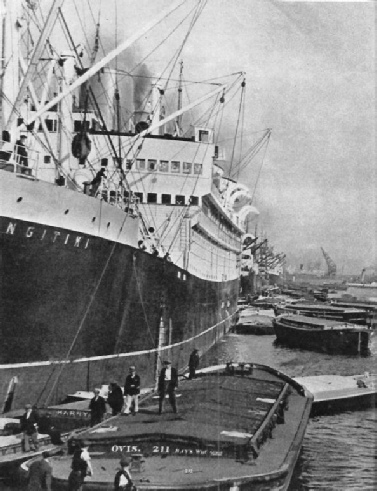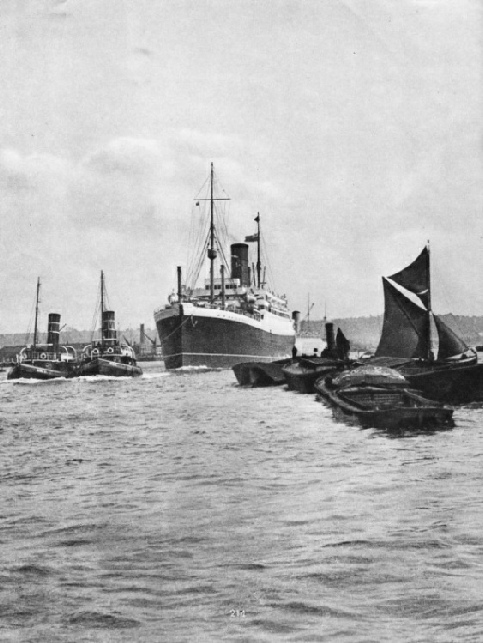
© Shipping Wonders of the World 2012-



Part 7
Part 7 of Shipping Wonders of the World was published on Tuesday 24th March 1936.
It included a centre photogravure supplement featuring the Port of London, which formed part of the article on London’s Link with the Sea.
The Cover
The cover of the current number shows HMS Duncan (displacement 1,400 tons) leading the First Destroyer Flotilla through the Corinth Canal. The canal is about 4½ miles long and 26 feet deep; ships must not exceed 6 knots.
The cover was later reproduced as the colour plate in a later chapter on the Corinth Canal.

Contents of Part 7
Heroes of the Trevessa
This article is concluded from part 6.
Hell Ships and Floating Homes
Life at sea was formerly a strange mixture of hardship and comfort. Some ships, because of the barbarous conditions in which their crews worked, were known as “Hell Ships”. Other vessels, even in the days when a career at sea was inseparable from hardship, were comparatively comfortable. The story of the Gatherer (otherwise known as the Bloody Gatherer) can be read here.
London’s Link with the Sea
To the Port of London come large ships and small ships carrying passengers and cargo along its sixty-nine miles of waterway. More than one-third of the overseas trade of the United Kingdom is handles by the Port of London.
This is the second article in the series Great Ports of the World.
You can read more on London’s Docks in Wonders of World Engineering.
Contents of Part 7 (continued)
A Great Ship Sails
“For New York left Southampton”. This is the brief announcement of a liner’s departure. But before sailing day arrives organizations are at work to prepare for a voyage that may take six days or six weeks.
The Special Tropical Service (Crude) Oil Tanker
A description of the ship called the Criollo Fiel or more familiarly, Faithful Creole. She was built on the Tees at the yard of the Furness Shipbuilding Company, to the order of the Standard Shipping Company of New York for one of its South American subsidiaries, and designed for service on the Parana River.
This is the fourth article in the series on Merchant Ship Types.
The Lure of Lost Gold
Rumours of lost treasure have for centuries enticed men to set out on quests that have sometimes brought them profit, or sometimes sent them to their deaths. In recent years Cocos Island, in the Pacific, has held out an ever-beckoning finger to adventurers. The photograph above shows Wafer Bay, one of three possible landing-places on Cocos Island. The other tow are Chatham Bay and a third bay, unnamed, on the south coast of the island, which is of no use as a harbour sine it is exposed to the surf. Wafer Bay suffers from a heavy swell at certain seasons, and so Chatham bay is preferred by treasure-hunters. About 1883 a concession to search the island for treasure was granted by Costa Rica to a German named Gieseler, who was also appointed Governor. Gieseler settled at Wafer Bay and lived about twenty years on the island with his wife and a servant, but he did not find any treasure. This article is concluded in part 8.

The Port of London
Photogravure Supplement - 1
Below the Bridges
The illustration, taken near Gravesend, depicts the Thames at the Tilbury-Gravesend ferry, and in the background an Orient liner at the Tilbury landing-stage. The Tilbury Docks were opened in 1886. In 1929 extensive work was undertaken to improve them. The water are of the Tilbury Docks is 105 acres, the maximum depth is 42 ft 6 in. They are used chiefly by the Bombay and Australian steamers of the P. and O., the Orient, Clan, Harrison (Calcutta service), Bibby (homeward bound) and Ellerman Lines.

The Port of London - 2
A BUSY SCENE AT THE Royal Albert Dock which is a part of the group known as the Royal Docks. The Royal Albert Dock was opened in 1880. The Royal group forms a three-mile stretch of water parallel with the fairway. The system is the largest in the world with a total water area of 245 acres and about thirteen miles of quays. Regular services are maintained to and from the Royal Docks by many of the big shipping lines, and vessels sail from here to all parts of the globe. As many as half a million tons of shipping have been known to be in these docks at the same time.

